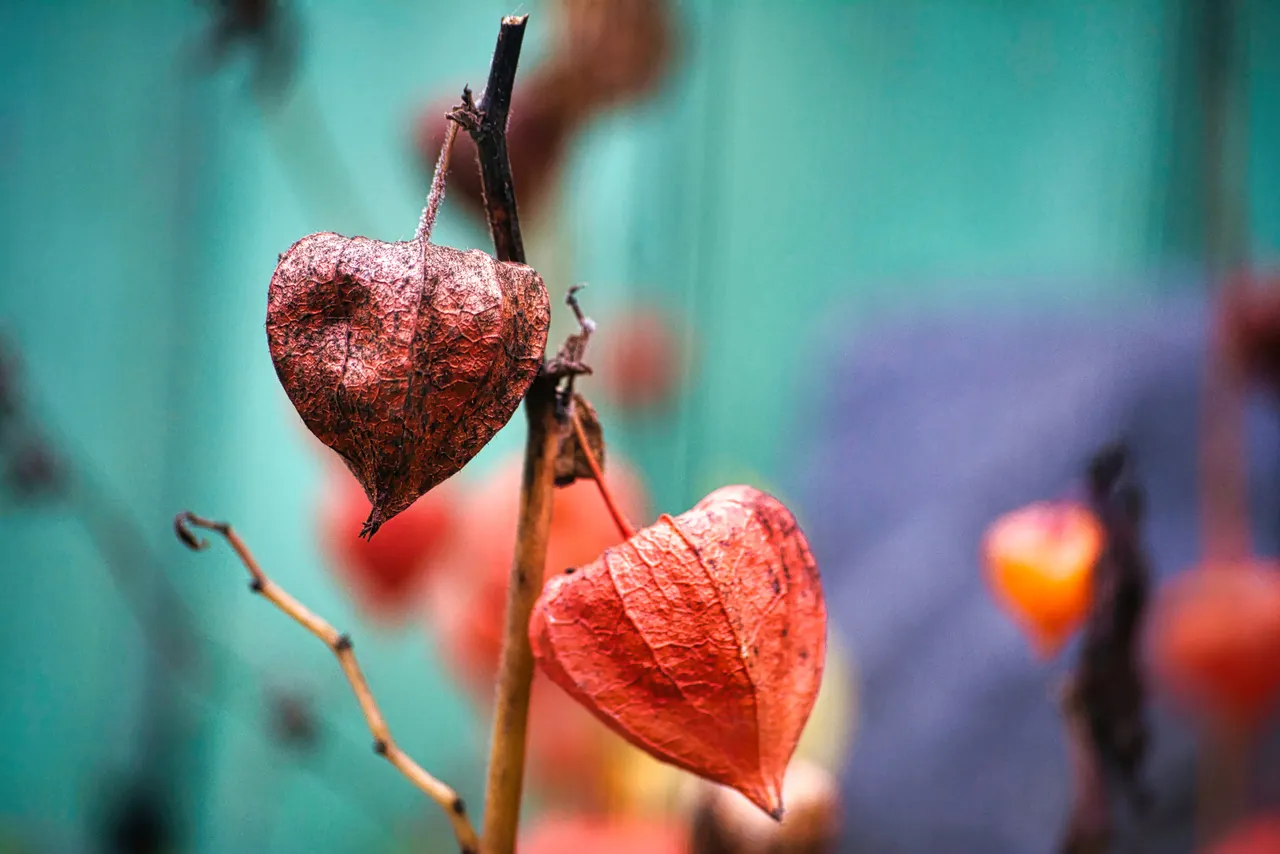Autumn motifs are not only colourful leaves. In my garden, for example, the symbol of autumn is the Chinese lantern, Alkekengi officinarum. I don't grow it there on purpose, in fact I don't even know where it came from. But I let it grow. The "lanterns" aren't really flowers, they're fruits. Inside is a berry that should theoretically be edible when ripe, but I'd rather not try too hard. (The moth (Physalis) that Lidl sells is a different species.)
Anyway, those orange lanterns are a nice splash of colour in the autumn garden, and actually last well into winter or sometimes spring.
I consulted that first photo with a colleague at work to see if the background was blue or green. We agreed on the definition that it was blue-green.
K podzimním motivům patří nejen barevné listí. Třeba u mně na zahradě je symbolem podzimu mochyně židovská, Alkekengi officinarum. Nepěstuji ji tam cíleně, vlastně ani nevím, kde se tam vzala. Ale nechávám ji růst. Ty "lampiónky" ve skutečnosti nejsou květy, ale plody. Uvnitř je bobule, která by ve zralém stavu měla být teoreticky jedlá, ale raději bych to moc nezkoušel. (Ta mochyně (Physalis), co se prodává v Lidlu, to je jiný druh.)
V každém případě, ty oranžové lampiónky jsou pěkným barevným oživením podzimní zahrady, a vlastně vydrží až dlouho do zimy nebo někdy až do jara.
Tu první fotku jsem konzultoval s kolegou v práci, jestli má pozadí modré nebo zelené. Shodli jsme se na definici, že je modrozelené.




